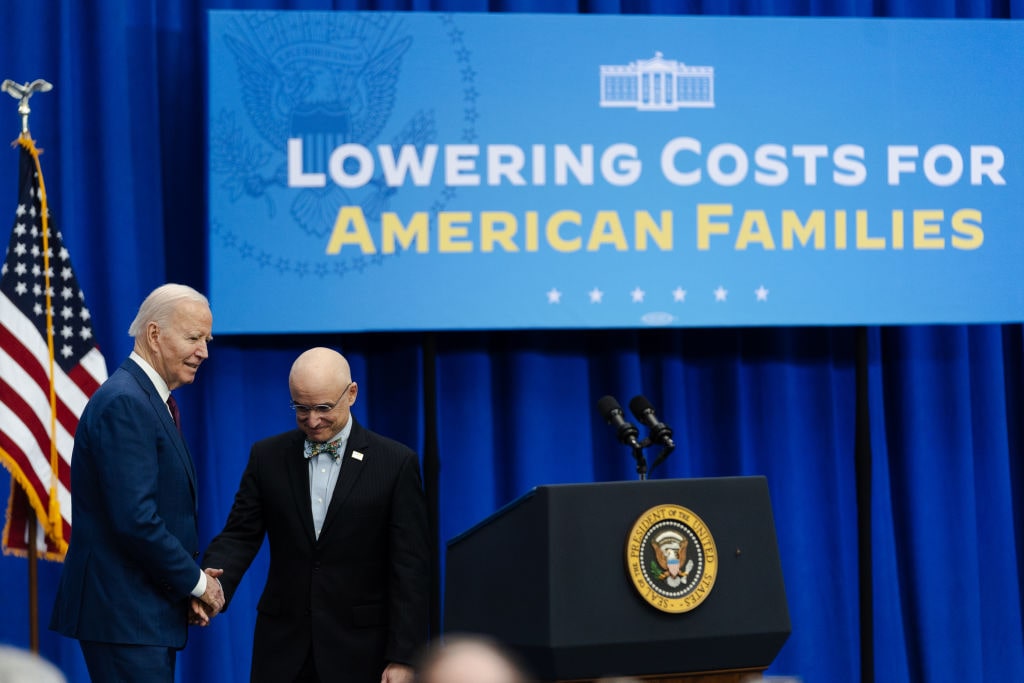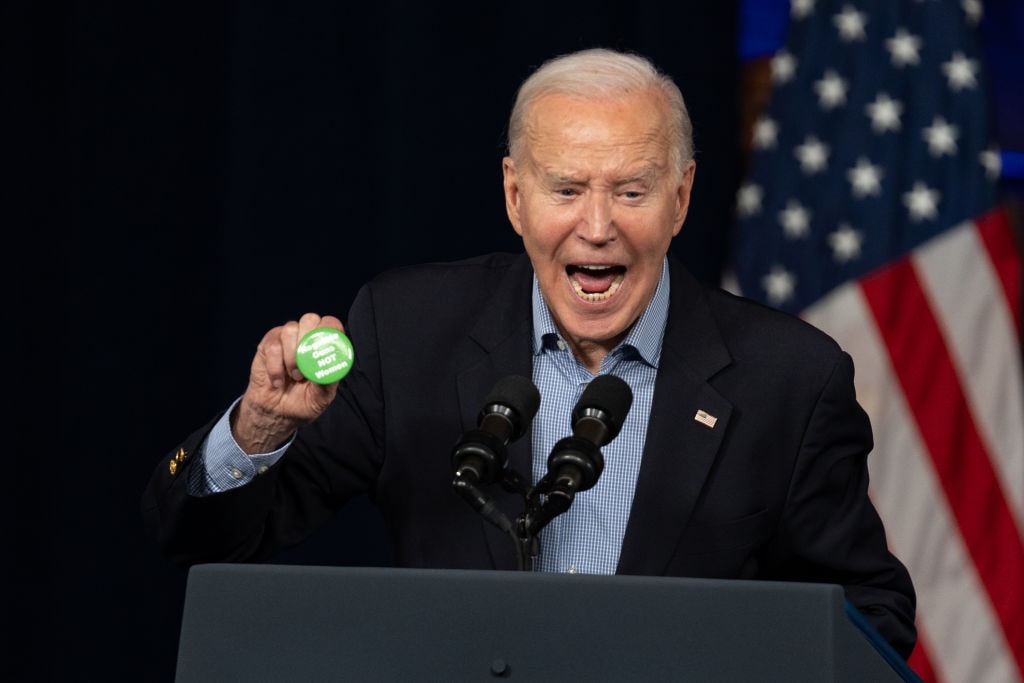The White House has unveiled its election-year budget proposal. The price tag? $7.3 trillion. President Joe Biden’s wish list attempts to convince voters that Bidenomics, not Trumponomics, is the answer to America’s economic challenges. For now, it is a framework that will not be implemented in its entire form. Instead, the blueprint will face Republican obstacles, receive multiple adjustments, and maybe result in year-long squabbles should the incumbent win re-election.
Inside the Biden Budget
The main numbers for the Biden budget for fiscal year 2025, which begins in October, are this: $7.266 trillion in spending, $5.485 trillion in tax receipts, a $1.781 trillion deficit, and net interest payments hitting close to $1 trillion. This concept contains $1 trillion more in spending than last year and, on a cumulative basis, consists of $4.4 trillion more in expenditures than the previous one. To put the president’s spending plans into context, annual outlays equal roughly $66,000 per US household.
 The current administration proposes raising the corporate tax rate from 21% to 28%, implementing a wealth tax on unrealized incomes, and reshaping the corporate tax code. Top officials say the Biden budget also intends to bolster Social Security and Medicare, end subsidies to Big Pharma and Big Oil, and negotiate prescription drug costs. The White House thinks it can generate nearly $5 trillion in revenue over the next ten years. The funding would then be dedicated to fighting crime, funding child care programs, reintroducing child tax credits, offering a 12-week paid family leave program, and giving money to the green energy lobby.
The current administration proposes raising the corporate tax rate from 21% to 28%, implementing a wealth tax on unrealized incomes, and reshaping the corporate tax code. Top officials say the Biden budget also intends to bolster Social Security and Medicare, end subsidies to Big Pharma and Big Oil, and negotiate prescription drug costs. The White House thinks it can generate nearly $5 trillion in revenue over the next ten years. The funding would then be dedicated to fighting crime, funding child care programs, reintroducing child tax credits, offering a 12-week paid family leave program, and giving money to the green energy lobby.
According to Biden, the budget is about helping all Americans: “It’s about politics in many people’s minds, but not mine. It’s about investing in all of America and all Americans so everyone has a fair shot and leaving nobody behind.” However, despite his allies in the press touting it as a populist plan that targets the affluent, the Devil is in the details, as there are roughly $36,000 worth of tax hikes per family, according to early estimates from the Heritage Foundation.

(Photo by Sophie Park/Getty Images)
President Biden says he will lower the federal deficit by $3 trillion over the next decade. Even if this were accomplished, as the commander-in-chief says, the proof is in the pudding you eat. The White House forecasts $16 trillion in cumulative shortfalls by 2034, with about $86 trillion in spending and $70 trillion in revenue. This will also add to the national debt, soaring to nearly $53 trillion. Ultimately, $3 trillion is a drop in the bucket and fails to achieve anything substantive.
The elephant in the room is the interest. With the budget assuming the benchmark ten-year Treasury yield remains close to 4% over the next ten years, officials anticipate cumulative interest payments will be more than $12 trillion. This will account for 3.4% of the GDP and be the highest level in US history. Additionally, debt servicing payments will have quadrupled since Biden moved into 1600 Pennsylvania Avenue.
Undoubtedly, the Biden budget will accelerate America’s economic growth prospects, right? Right? Not exactly. The administration projects real GDP to hover around 2% over the next ten years. Plus, the consumer price index (CPI) is expected to stay above 2% in this span.
Remember, these are all rosy projections that do not factor in recessions or wars.
The Meat and Potatoes
Another budget, another missed opportunity to address the meat and potatoes of America’s fiscal woes: mandatory spending. Under the Biden budget, mandatory spending will increase from $5.1 trillion this year to $8.3 trillion, accounting for 80% of the federal budget. This will consist of everything from entitlements to interest payments.
Economists purport that this is exacerbating the nation’s fiscal mess. While it is comical to point out millions of dollars being shipped to Ethiopia so the government can buy citizens’ shoes or an egregious sum of taxpayer money being used to research transgender monkeys, the non-discretionary component of the annual budget is driving the country off a cliff. At the same time, other economists note that adopting conservative approaches like the Penny Plan (removing 1% from every agency’s budget) or restoring spending levels to those before the pandemic would be sufficient enough to balance the books.
However, when various departments claim that the cupboard is bare and that trimming 1% would result in devastation, politicians cave and apologize by writing a blank check. In February, IRS chief Danny Werfel warned lawmakers that removing $100 million from the IRS will fuel the deficit by $600 million over ten years. In Washington, this is a rounding error, but Werfel’s remarks raised eyebrows at a recent House Ways and Means Committee hearing.
A Balancing Act
President Biden has repeatedly stated that his trifecta of legislative accomplishments – the Inflation Reduction Act, the Bipartisan Infrastructure Law, and the CHIPS and Science Act – helped him cut the debt and deficit (untrue). The Fiscal Responsibility Act was touted as a stepping stone to resuscitating fiscal responsibility in the nation’s capital, although the Congressional Budget Office figures showed little gains in the bigger picture. Heading into November’s presidential contest, it will be argued that the Biden budget would benefit everyone. In the end, like schemes of yesteryear, the latest budgetary framework merely rearranges the deck chairs, continues bleeding the patient, and sends the bill to the next generation.




